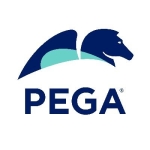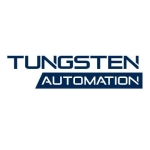What is our primary use case?
I utilize Automation Anywhere for automation purposes. Recently, I completed a project for a client in the telecom sector. The project involved automating their monthly bill review system for customers. Previously, this system required on-site employees to check millions of invoices each month manually. A dedicated department then verified these invoices, sent them to customers, and verified payment status after payment. This process was time-consuming. We used Automation Anywhere's RPA and OCR capabilities and the AI document processing module to analyze document structures and verify tabs. We then automated various steps like accessing the portal, applying checks, and sending invoices via email. Now, the entire process is automated, triggered by a robot each month.
The main challenge which organizations want to address through any implemented RPA solution is the repetitive nature of their tasks. Instead of having ten employees perform the same monotonous task from nine to five every day, a single RPA robot can handle the workload, freeing those employees to focus on tasks that require human intervention. Automation is ideal for repetitive tasks, such as processing millions of invoices monthly, which can now be managed by a few RPA robots working around the clock. This allows employees to explore new opportunities, which is the primary goal of automation and the main reason for using RPA or any automation technology. Most automation technologies have features that enable this shift. However, automation is not suitable for all tasks; tasks requiring approvals or human judgment cannot be automated.
The deployment model varies depending on the client. In Pakistan, I worked with several clients using ABL who opted for cloud deployment. However, clients dealing with highly confidential and sensitive data, such as banks and telecommunications companies, prefer on-premises solutions. In contrast, clients in sectors like healthcare might be more open to utilizing cloud infrastructure.
How has it helped my organization?
Automation Anywhere has enabled repetitive tasks previously done manually to be automated.
Regarding RPA, ever since generative AI was introduced, we have ChatGPT and Google Gemini. The advent of these generative AI models has shifted the automation landscape. Automation has moved from Robotic Process Automation towards Intelligent Process Automation. The difference between RPA and IPA lies in their ability to handle changes. For example, if a website form changes its layout, a traditional RPA bot might fail because it can't identify the fields or buttons in their new positions. However, with IPA, the bot is intelligent enough to understand the fields' requests and can still process the data regardless of UI changes. Besides this, numerous other IPA use cases leverage Large Language Models and generative AI. For instance, a company could have a trained dataset monitored by an RPA bot, which then uses generative AI to create and send daily reports to top management, analyzing current numbers concerning past performance. This is a fascinating area that I've been exploring and working on lately.
For business users without technical skills, automation is achievable depending on the complexity of the task. Simple processes like sending custom emails from an Excel list can be easily automated with basic tutorials. While time and practice are necessary for mastery, basic automation can be initiated with just a few introductory videos.
We recently started using Automation Anywhere Copilot, so we haven't had the opportunity to integrate it with many of our automations. However, we have integrated it with SAP, where the bot reviews SAP data and provides the user with the required information at runtime. I have utilized this feature, and it's quite interesting. They also offer integrations with many other software, so the integration level is relatively high. Regardless of the type of features the business uses, whether they are using Salesforce, Microsoft Dynamics, SAP, or even AWS, integrations are available. They provide custom APIs that can be used for integration.
Automation Copilot helped increase our productivity by 60 percent.
Copilot has enabled staff to focus on other tasks by automating processes. For instance, the business department aimed to automate 350 processes this year, but by September, they had already surpassed that goal with 370 automations. Similarly, last year's target of 250 automations was exceeded, reaching 300. This increased efficiency has significantly improved workflows.
Our primary application of Generative AI for our telecom client is to detect service outages, such as when an area experiences a loss of service. We've been strategically planning our Generative AI approach for this year and the next, focusing on utilizing RPA to identify potential solutions and valuable insights within our data. For instance, in the context of outages, we aim to pinpoint the areas with the highest outage frequency, understand the reasons behind those outages, and correlate that information with customer complaint data. By analyzing metrics like complaint resolution times and outage resolution times, we can create a benchmark that helps us identify areas where we can enhance our customer service.
The amount of time Automation Anywhere helps save is dependent on the automated task. For example, the bill review task we automated helped save 10,000 hours per month.
We have several custom ERPs used internally but primarily rely on Microsoft Dynamics. We have a BCRM portal built on the Dynamics portal, hosting both our BCRM business-facing and CRM customer-facing systems. We also utilize Excel with VBA macros and other platforms, including Kofax for OCR. Kofax's Arabic language detection capabilities are crucial for processing UAE ID cards containing Arabic text. Kofax is our organization-wide OCR solution, integrated with Automation Anywhere. Overall, we have integrated Automation Anywhere with various software solutions.
Integrating Automation Anywhere into our workflows, APIs, and business automation is simple. RPA functions like a digital employee, and we can instruct them to perform tasks. Any activity currently done by a human employee can be done via RPA. However, the crucial question is whether it should be automated. If a task is performed infrequently, such as once every six months, creating an automation is inefficient. The time spent developing the automation could be better used to complete the task manually. Automation is ideal for repetitive tasks performed frequently. If a task isn't repetitive, automating it might not be beneficial. Regarding the capabilities of automation, nearly any work an employee performs on an organization's system has the potential to be automated.
What needs improvement?
Automation Anywhere has a persistent click-related issue that can make automation difficult, particularly in unattended environments. Even the Automation Anywhere team is aware of this problem, which has existed for several years. When automating tasks on a website, clicks may not work as expected in an unattended environment despite functioning correctly otherwise. The Automation Anywhere team has had numerous meetings to address this issue, but a solution remains elusive.
For how long have I used the solution?
I have been using Automation Anywhere for almost four years.
What do I think about the scalability of the solution?
Automation Anywhere's ability to provide automation at scales is dependent on how well it can integrate with every platform. I would rate the scalability seven out of ten.
How are customer service and support?
I compare all other RPA tools to UiPath, which has excellent support—I'd rate it ten out of ten. In contrast, I'd rate Automation Anywhere's support six out of ten.
How would you rate customer service and support?
Which solution did I use previously and why did I switch?
In addition to Automation Anywhere, we also use UiPath, and Power Automate.
It ultimately depends on the client's preference for an RPA solution. In my opinion, UiPath remains the leading option in the market, unmatched by any competitor. Automation Anywhere currently holds the second position, but I anticipate Power Automate surpassing it in the future. However, UiPath is considerably ahead of the competition, leaving Automation Anywhere as a distant second. While Automation Anywhere is a suitable alternative, UiPath's high pricing can be a factor in the decision-making process. A lot of our clients choose Automation Anywhere because it is cheaper than UiPath to implement. Power Automate is the solution often chosen by businesses that already have other Microsoft solutions integrated into their environment.
The primary distinction among these RPA tools lies in the connectors and capabilities offered by Power Automate. Many businesses already utilize Power BI and Microsoft Dynamics, with most BI-related software relying on Tableau or Power BI. While some smaller-scale operations may still use Excel for dashboards, it's becoming increasingly uncommon. Power Automate's built-in custom connectors for Microsoft products provide a significant advantage. Overall, Power Automate has proven to be a game-changer, exceeding expectations with its features, custom connections, and level of support. While not currently the case, it's conceivable that with further enhancements, Power Automate could eventually surpass Automation Anywhere in the market.
How was the initial setup?
While I wasn't involved in the initial deployment, I contributed to the migration from version A11 to A360. This was a major undertaking, spanning six months and presenting numerous challenges. Despite encountering various issues, we ultimately achieved a successful migration.
Cloud deployment is straightforward, while on-premises setup requiring server configuration can be challenging. A cloud deployment typically takes no more than one business day.
We have two teams: the operations team and the development team. The operations team handles deployment and typically consists of one or two people. The development team's size varies depending on the number of processes requiring automation. For fewer processes, one developer may suffice; however, we may engage five or even six developers for numerous processes.
What was our ROI?
Automation Anywhere provides good cost savings.
What's my experience with pricing, setup cost, and licensing?
Automation Anywhere's price is considerably better than UiPath's.
Which other solutions did I evaluate?
I evaluated Robocorp from a POC point of view.
What other advice do I have?
I rate Automation Anywhere eight out of ten.
Challenges in implementing Automation Anywhere depend on the process being automated. For instance, if your organization adopts Automation Anywhere, infrastructure won't be the primary concern as their cloud setup is straightforward. The real challenges lie in the processes themselves. RPA automates processes, so if, for example, in bill review, some invoices are unclear due to being scanned images, the robot might struggle to process them correctly. This is a process-related challenge, not an RPA implementation issue. To address this, instead of incorrect automation, we set a confidence threshold, say 80 percent, below which invoices are flagged for manual review. Thus, RPA implementation focuses on the process itself. Businesses have numerous processes across operations, products, clients, and consultations. The key is to identify these processes and determine suitable solutions. RPA involves instructing the robot on the required steps, which it follows diligently. However, even if ten employees perform the same task, each might have their own approach. Therefore, understanding the process from the user's perspective is crucial to identifying the optimal workflow. This ideal process is then programmed into the robot, ensuring consistent execution. It's important to remember that RPA, including Automation Anywhere, has limitations and cannot deviate from its instructions or make independent decisions.
Automating more complex processes requires a deeper understanding of coding concepts like loops, regardless of the automation scale. I teach UiPath Studio X, which is designed for business users without a coding background. It is a good starting point. Training in Studio X includes teaching basic coding concepts, emphasizing their connection to familiar Excel functions. This approach helps users understand the logic behind automation and bridge the gap between their existing skills and new concepts.
The learning curve for RPA automation, depending on your desired level of mastery, is manageable. It is key to understand all the features and how they work, including the AI-powered ones. Basic RPA automation can be learned in about four to five months, allowing someone to start working as an RPA developer. However, working on an actual project for a year or a year and a half is recommended to become a true expert. This provides ample time to learn the ins and outs of Automation Anywhere, understand the challenges, and develop solutions.
Upgrading Automation Anywhere to a newer version on the same platform is straightforward, but our migration from the obsolete on-premise A11 to the cloud-based A360 required moving every single business process, which was time-consuming. Apart from that specific migration, version upgrades are generally not complex.
Bots running on a cloud platform require continuous maintenance. While the cloud platform can monitor the bots, human oversight is essential to identify and troubleshoot issues like crashes. Large clients may necessitate a dedicated maintenance team working shifts to provide 24/7 monitoring and support. These teams typically monitor the bots' control room on a separate screen while performing other tasks. In the event of a crash, they investigate the cause and, if unable to resolve it, escalate the issue to the development team for further assistance.
Which deployment model are you using for this solution?
On-premises
Disclosure: My company does not have a business relationship with this vendor other than being a customer.





















